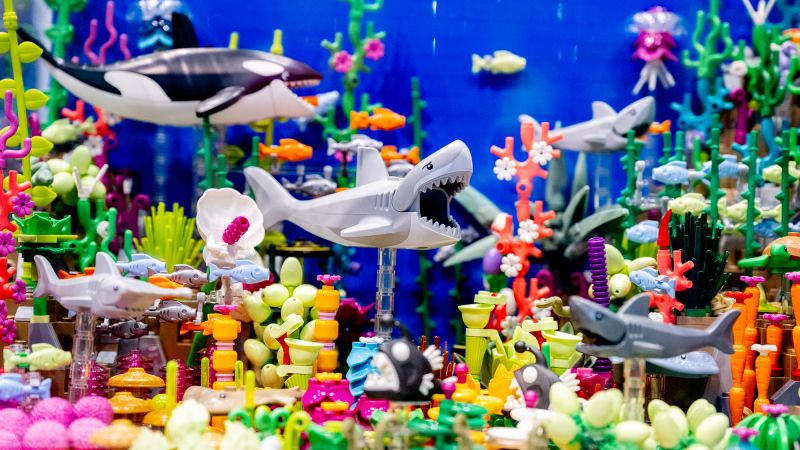Toymaker Lego is making progress towards replacing fossil fuels with renewable and recycled plastic in its signature bricks, despite the higher cost. The company reported a 26% increase in profit for the first half of the year, with sales to consumers growing by 14%, outperforming the wider toy industry. CEO Neils Christiansen highlighted the brand’s global appeal and the success of its product portfolio across ages and interests.
Despite a global slump in toy sales, Lego has continued to thrive, selling billions of plastic bricks annually. The company has tested over 600 materials in an effort to completely replace its oil-based bricks by 2030, but has faced challenges. Now, Lego plans to gradually reduce the oil content in its bricks by paying more for certified renewable resin, with the goal of using entirely renewable and recycled materials by 2032.
Christiansen stated that Lego is willing to absorb the additional costs for now in order to drive the production of sustainable materials and not pass the cost onto consumers. The move towards sustainable materials comes as the market for recycled or renewable plastic is still in its early stages, with most feedstock being used for biodiesel. Lego’s suppliers are using bio-waste and recycled materials to replace virgin fossil fuels in plastic production, although fossil-based plastic remains significantly cheaper than sustainable options.
While Lego’s efforts towards sustainability are commendable, they face challenges in a market where cheap virgin plastic remains dominant. Other toymakers like Hasbro and Mattel are also making efforts to incorporate plant-based or recycled materials into their products, but are not as advanced in setting firm targets on plastic use. Despite these challenges, Christiansen noted an increase in activity and investment in sustainable materials, indicating a shift towards more environmentally friendly practices in the industry.
Lego’s commitment to sustainability is driven by a family-owned structure that allows the company to invest in more expensive materials without passing the cost onto consumers. The company’s goal of using only renewable and recycled materials by 2032 aligns with broader efforts to reduce dependence on virgin fossil fuels. With the shift towards sustainable materials, Lego aims to set an example for the toy industry and encourage other companies to invest in more environmentally friendly production methods.













